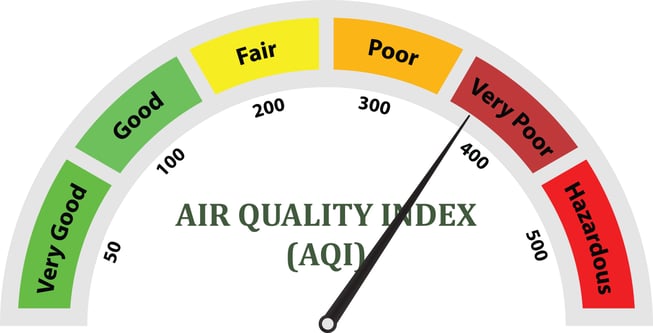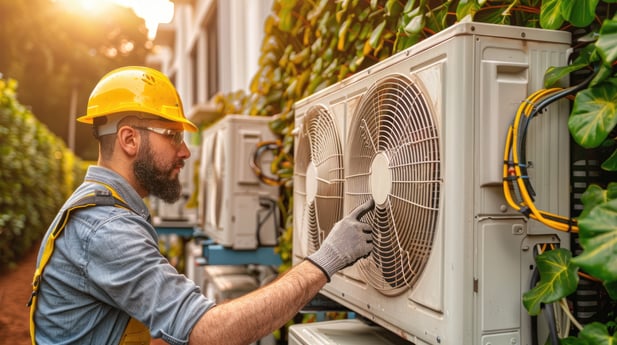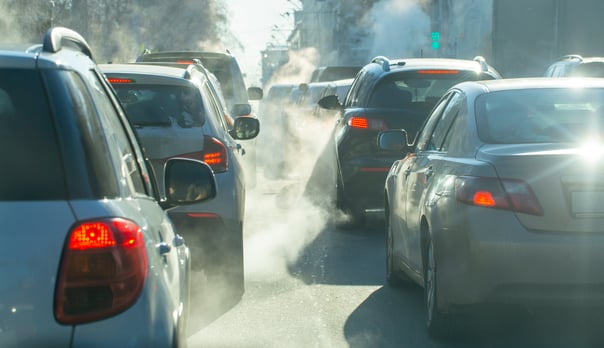Summertime brings with it many things. Unfortunately, one of those things is a threat to the quality of the air we breathe.
Over time, air quality has become an increasing concern for many parts of the world, especially during certain times of the year. Poor air quality can have an impact on individuals, businesses, and entire regions. Let’s take a closer look at what is polluting the air and what everyone should know about air quality.
Understanding Air Quality Index
The Environmental Protection Agency (EPA) has over 1,000 locations where is measures and records air quality. Taking into account the four major types of pollutants, it calculates the Air Quality Index (AQI). With regard to measuring AQI, the lower the number, the better the air quality. As long as the AQI for any of the four pollutants is below 100, the air quality is at an acceptable level. However, once the AQI goes over 100, alerts are sent out and groups vulnerable to respiratory illness should avoid going outside. If the AQI reaches 300 or above, it signals hazardous conditions for everyone. Any city that has at least 350,000 people must submit a daily AQI report so that the general public can be aware of how clean and healthy the air is currently.

Major Pollutants
As mentioned, four pollutants are used to calculate Air Quality Index. These are the four pollutants that are regulated as part of the Clean Air Act. Let’s take a closer look at each one.
Ozone
To be clear, ozone in the Earth’s stratosphere isn’t the problem; this type of gas is helpful because it protects us from ultraviolet rays. However, ground-level ozone can be a major pollutant. It comes from power plants, industrial boilers, and even automobiles that burn fossil fuels. These emissions react with sunlight to produce ground-level ozone, which is why it becomes particularly troublesome during the summer months when there is more sunlight, warmer temperatures, and more cars on the road. If the level of ground-level ozone is high enough, people can experience chest pain, coughing, lung infections, and exacerbate pre-existing conditions like asthma.
Carbon Monoxide
Most people are familiar with carbon monoxide as a silent killer since it’s a colorless and odorless gas. The assumption most people make is that it comes from automobiles. However, wildfires, wood-burning stoves, and even industrial combustion all contribute to putting carbon monoxide into the atmosphere. Unlike ground-level ozone, higher levels of carbon monoxide are common in the winter when temperatures are colder and carbon is less likely to burn completely. Inhaling carbon dioxide prevents enough oxygen from circulating throughout the body, causing dizziness, confusion, flu-like symptoms, and cardiovascular problems. Young people, the elderly, and those who already have heart or respiratory illnesses are the most susceptible to carbon monoxide in the air.
Sulfur Dioxide
Sulfur dioxide in the air is a direct result of burning oil and coal that contain sulfur. This is most common in refineries and power plants. The body’s nasal passages are typically effective at protecting us from inhaling sulfur dioxide in the air. However, when people breathe through their mouth, there is no such filtration system, which can lead to wheezing, chest tightness, and shortness of breath if there is a large volume of sulfur dioxide in the air. Long-term exposure to sulfur dioxide can also cause heart and lung diseases, including asthma.
Particulate Matter
The fourth pollutant that’s a concern is particulate matter (PM), which can refer to both liquid and solid particles. These are particulars that are between 2.5 and 10 micrometers in size. Some of these particles can only be seen with an electron microscope because they are smaller than the width of a strand of human hair. They also come from a variety of sources, including dusty roads, wildfires, combustion of all kinds, and ammonia from fertilized farmland. PM can be breathed into the lungs but then spread throughout the rest of the body, leading to coughing, fatigue, and shortness of breath, among other symptoms while also exacerbating pre-existing lung and heart conditions.
Summer Concerns
As alluded to earlier, summer is often the worst time of the year for air quality. Most cities contend with air quality issues during the summer, putting people most at risk of these types of illnesses when the weather is warm. Of course, air temperature is not just the only factor that makes summertime a period of concern for pollutants and air quality. Here are some of the factors that make summertime potentially hazardous for air quality.
Summer Heat
Of course, the summer heat is often the backbone of air quality concerns. If there is a heatwave or extended drought, sand and dirt from the ground are more likely to become loose and be spread around by the wind, putting more tiny particles in the air for people to breathe. As mentioned, summer is the worst time of year for ground-level ozone, particularly in dry climates that don’t receive much relief from hot temperatures.
Thunder Storms
While droughts are certainly bad news for air quality, thunderstorms during the summer aren’t always the best cure. These powerful storms kick up the wind, allowing pollen, spores, and other pollutants to be distributed throughout a large area. Storms can actually break down allergens into small particles that are easier for people to breathe in and bypass the body’s natural filtration systems.
Air Conditioning
Of course, most people have air conditioning in their homes to help protect them from the heat during the summer months. As long as air filters in HVAC systems are replaced regularly, people will be protected from large particles. However, finer pollutants can sometimes slip past a building’s filtration system and become circulated inside, allowing people to unknowingly breathe in harmful pollutants.
Summer Activities
Unfortunately, many of the things people like to do during the summer can increase their chances of breathing in harmful substances. Summer vacations mean more vehicles on the road, which means more exhaust, leading to higher levels of air pollution than other times of year. Likewise, fireworks, bonfires, and other popular summer activities can also send more pollutants into the air, resulting in more air quality concerns throughout the summer.
Wildfire Threat
Last but not least, summer months are also peak wildfire season throughout much of the country. In addition to burning up large chunks of land, wildfires can send carbon monoxide and other particulate into the air, reducing air quality. The kicker is that the air quality isn’t just for the surrounding area. Winds can help blow smoke from wildfires hundreds of miles away, causing hazy conditions and harming air quality for those who are nowhere near the fire.
Dealing with Poor Air Quality
While air pollution and air quality concerns aren’t going away anytime soon, there are ways that people can reduce the concern and stay prepared for instances when air quality deteriorates. Businesses, in particular, can work to make a meaningful difference. They also need to make sure that employees are adequately prepared and that their health and safety aren’t at an increased risk while doing their job amidst air quality concerns. Here are some things that businesses can do to play their part in improving air quality or dealing with poor air quality.
HVAC Maintenance
Just like individuals need to change their air filters regularly, companies need to monitor their workplace HVAC systems. This means routine inspections of the HVAC system to ensure it’s working properly, as well as changing air filters to ensure employees are breathing clean air all day. If air quality outside is a concern, it’s even more critical for a building’s air filtration system to be working properly. The EPA also suggests that pest control, food storage, and proper garbage disposal can also help contribute to clean air in the workplace.

Encourage Remote Work and Green Transportation
The best thing businesses can do to improve air quality and reduce pollution is to allow employees to work from home. The fewer commuters on the road, the less air pollution. As mentioned, this can be particularly important during the summertime when air quality is a greater concern. If companies can take all of their employees off the road, even if it’s not every day of the week, it can make a meaningful difference. If remote work isn’t possible, businesses can still find ways to encourage employees to carpool, bike to work, or take public transportation as a way to reduce air pollution.

Sustainable Business Plan
Businesses can make the biggest impact by taking air quality and other environmental matters into consideration when making business decisions. This may not always be easy, but it’s the best way to make a positive impact on issues like air quality. With all decisions a business makes, it should consider how it will impact air quality. Are there ways that a business can reduce its contribution to air pollutants either directly or indirectly? Are there initiatives that can be taken to encourage employees or customers to reduce the contributions they make to air pollution? Can a business work with partners who are also aware of air quality issues and committed to being part of the solution? Businesses must truly embrace the importance of air quality in every decision they make in order to create a positive impact.

